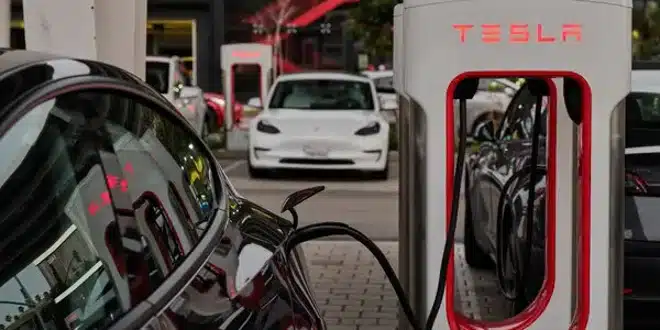Tesla’s sales dropped for the second consecutive quarter, marking the first time in the company’s history that it has experienced two quarters of year-over-year sales declines. The latest quarter saw Tesla sell nearly 444,000 vehicles, a decrease of about 5% from the previous year. This follows an 8.5% drop in sales during the first quarter. Tesla, known for its consistent growth in auto sales, is now facing increased competition in the electric vehicle (EV) market.
The decline in sales highlights the growing competition within the EV market. Although overall EV sales continue to rise, the industry’s growth rate has been slower than expected, leading investors to push for higher profitability per vehicle sold.
Previously, the only other quarter in Tesla’s history with a year-over-year sales decline was during the peak of the pandemic when factory closures were enforced.
Despite the drop, there was some positive news. Sales exceeded the forecast of 436,000 by some analysts and were enough to keep Tesla ahead of Chinese automaker BYD in global sales of purely electric vehicles. BYD reported EV sales of 426,000 for the same period, a 21% increase from the previous year, but not enough to surpass Tesla.
The better-than-expected sales figures lifted Tesla’s (TSLA) share price by more than 9% in midday trading. However, the shares are still down about 8% for the year, despite the recent jump.
To combat growing competition, Tesla has been cutting prices for more than a year. These price reductions have supported sales but have also squeezed profit margins. Tesla is scheduled to report its second-quarter financial results on July 23.
General Motors (GM) reported a 40% increase in US EV sales compared to a year ago, reaching about 22,000 units, a record for the company. However, GM’s overall sales were relatively flat, rising just 0.6%, partly due to issues with the CDK platform used by many of its dealers. While GM saw strong EV sales, its traditional gasoline-powered car sales dropped slightly by 0.3%.
GM’s EV sales were bolstered by the introduction of new models, such as the Blazer EV and Cadillac Lyriq, which offset the decline in sales of the Bolt, GM’s previously best-selling American EV, which saw a 90% drop in sales.
Toyota also saw significant growth in US EV sales, which soared 301% to 11,600 units. However, despite gaining market share, both GM and Toyota still account for only a fraction of Tesla’s sales.
Tesla does not provide a detailed breakdown of its sales by country, but filings suggest that 43% to 49% of its automotive sales revenue comes from the US, implying that around 190,000 of the cars delivered in the quarter were sold to US customers. Combined, GM and Toyota’s US sales are only about one-sixth of Tesla’s total.
The decline in Tesla’s sales underscores the impact of increased competition. Tesla’s vehicle lineup is aging, with the Model S sedan, launched in 2012, and the Model Y, unveiled in 2019, among the oldest. The newer Cybertruck has faced severe quality issues, leading to multiple recalls, including recent ones due to problems with its windshield wiper and bed trim.
Last week, Tesla announced the third and fourth recalls of the Cybertruck, affecting nearly all of the 12,000 units sold to date. Issues include a faulty windshield wiper and a piece of plastic trim that can detach while driving. In April, another recall was issued due to an accelerator pedal that could stick. These recalls have raised questions about the build quality of the Cybertruck as Tesla continues to navigate a competitive and evolving market.


